While many websites claim that bears hate certain scents, the effectiveness of most of these repellents alone is questionable. While one study shows that chemical or household items might temporarily repel bears, the study failed to prove that such items keep bears away for extended periods of time. As such, repellents work best when combined with other bear deterrents, including the use of sound and locking up odorous items. Together with those measures, scents may help repel bears.
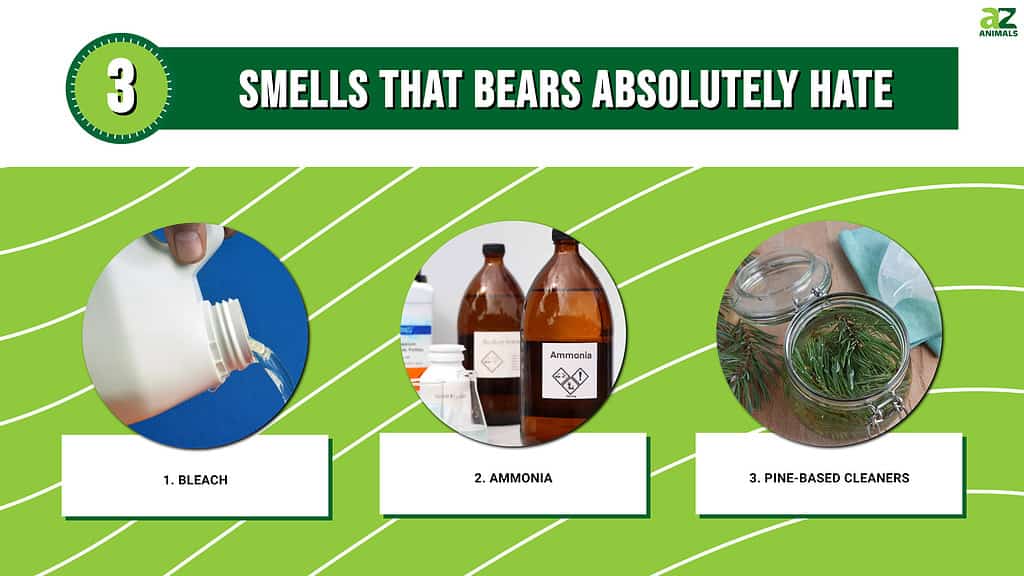
There are stipulations to follow when applying these scents outdoors. Placing scents on bear lockers or bear-safe trash cans is an approved method of application; however, you should never put these scents on your body.
Lock Up Odorous Items Before Scent Application
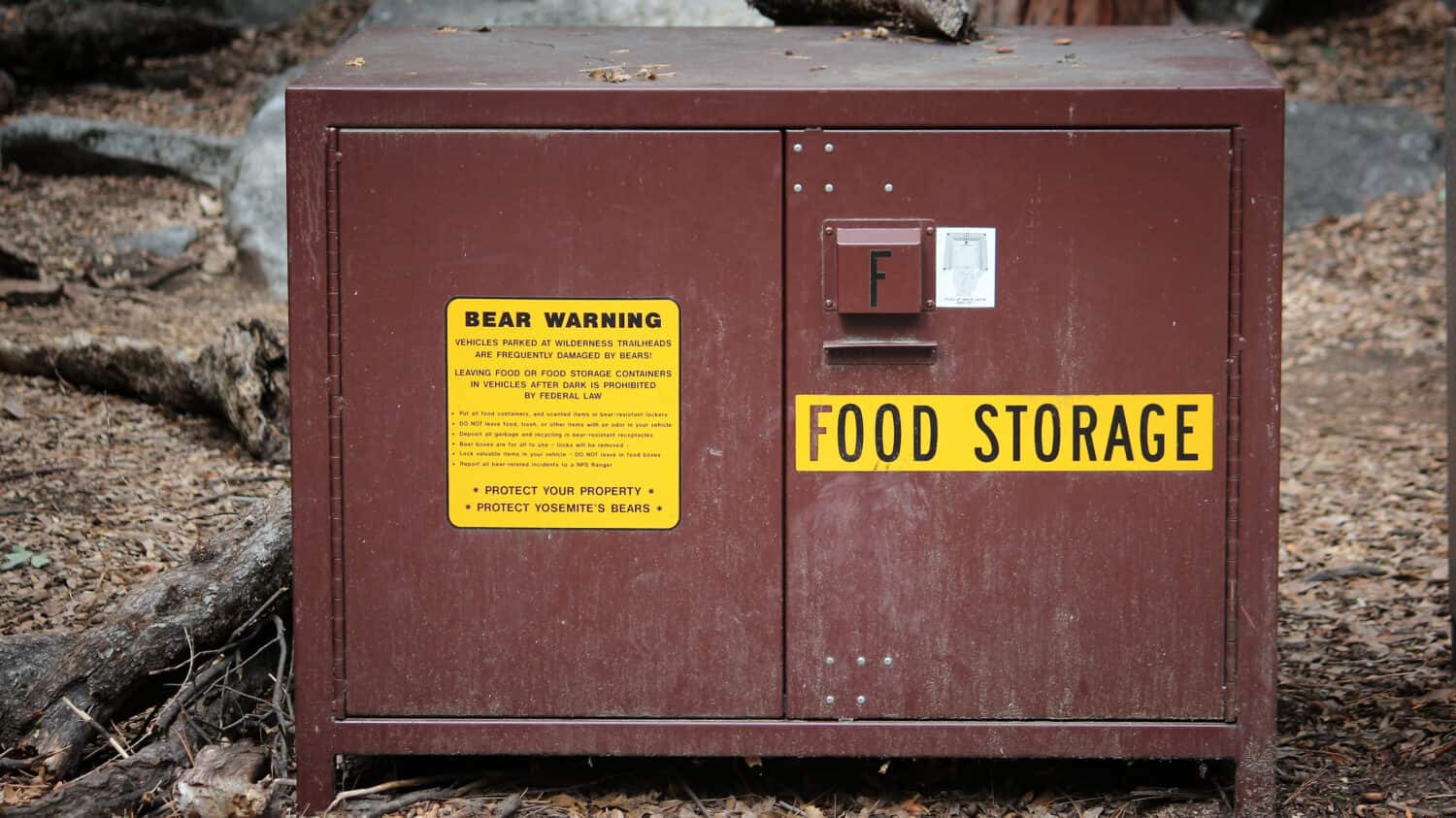
Yosemite National Park has a population of black bears, so park management uses food storage lockers to protect visitors and bears.
©Tupungato/Shutterstock.com
It is important to remember that bears are incredibly curious animals with extremely sharp senses of smell. Due to their curiosity, they often seek out unknown scents that could be food sources.
The most effective prevention of unwanted bear encounters is to lock up any odorous items. Use lock boxes provided by campsites, as bears have been known to break into cars.
If lock boxes are not provided, other options to consider are bear bags or canisters.
An odorous item qualifies as:
- Food
- Food scraps
- Alcohol
- Pet food
- Used utensils
- Cooking grates
- Soap
- Deodorant
- Toothpaste
- Any cosmetic item
- Clothing with food odor (say, from a barbecue)
Smells to Apply That Bears Absolutely Hate
Once all of your odorous items are locked up and away from the bear’s reach, you can apply some common household cleaning agents to your canisters, bags, or lock boxes.

Just like many humans, bears hate the smell of stronger cleaning products such as bleach, ammonia, and pine-based cleaners.
©Andrew Angelov/Shutterstock.com
Locking up your odorous items is required at any campsite; however, the use of scent to repel bears is not. Some people may hear ‘smells bears hate’ and apply smells to their person. This is incorrect. In order to further deter bears, you may want to use small amounts of certain household products on your bear-safe containers or in an area where odorous items have maybe spilled or been profusely disseminated.
1. Bleach
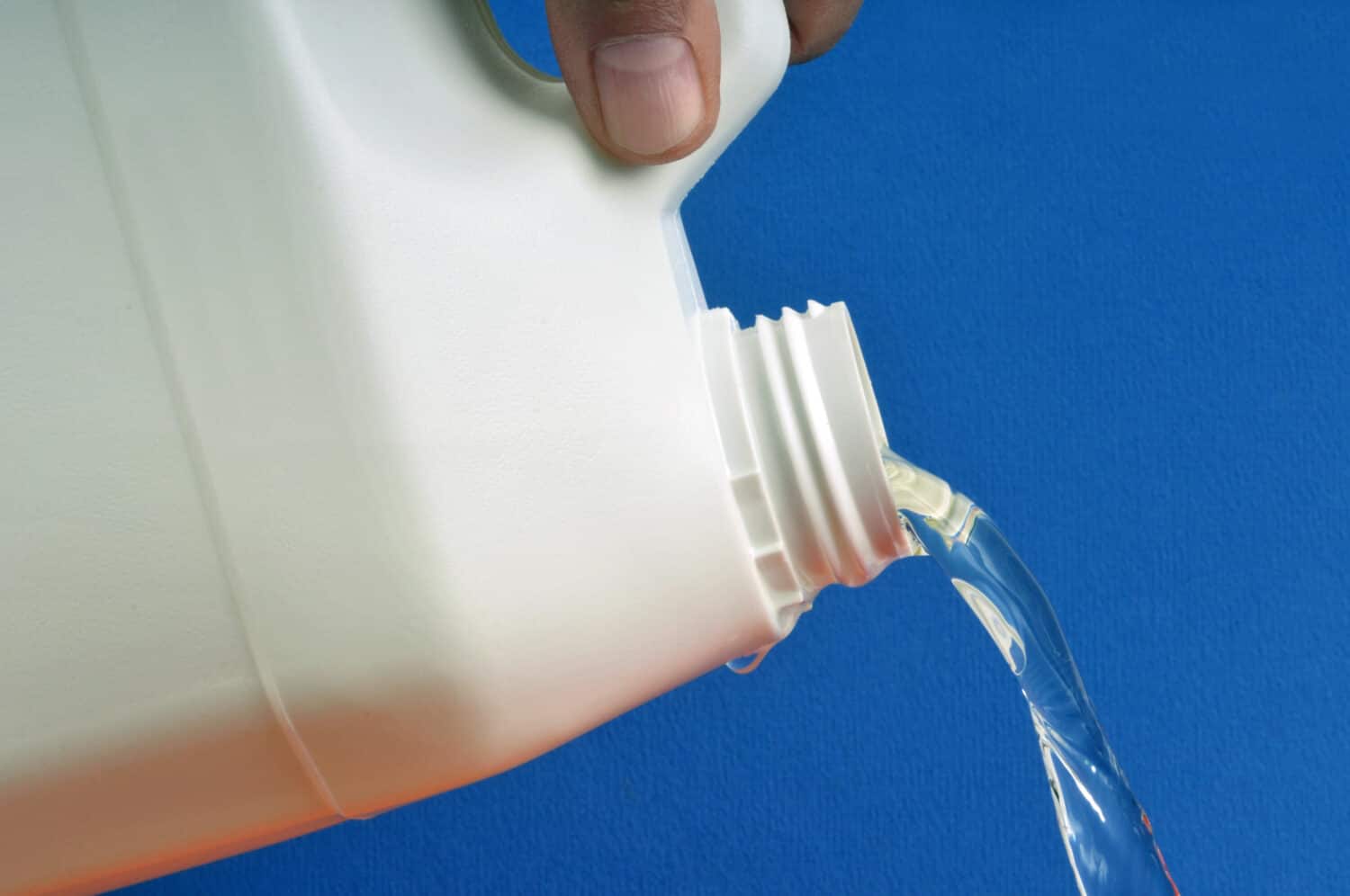
Bleach is a strong chemical cleaner and should be treated as such. Always dilute your bleach and never mix it with ammonia.
©RVillalon/Shutterstock.com
For many, this is a go-to smell that bears hate. Make sure you dilute it with water. A 10:1 ratio of water to bleach should do.
Using a spray bottle or any container you have on hand, mix bleach and water to your desired strength. Then, take a rag and rub a light amount of bleach on the surface of the bear lockers and bear-safe trash cans. You can spray the handles, plus around the perimeter.
2. Ammonia

Like bleach, you should only ever use ammonia by itself.
©chemical industry/Shutterstock.com
This is another scent humans hate, so it’s no wonder bears hate it too.
If you use these scents as bear repellents, you must pick either bleach or ammonia, and never use both. Never mix ammonia with bleach, as it is a safety concern for both humans and bears, and it can result in death.
You can put containers of ammonia around your campsite to ward off bears and neutralize smells in your area. Because ammonia can blind a bear, containers with holes in the top are the safest. This way, the scent is wafted around, but not easily accessible.
3. Pine-Based Cleaners
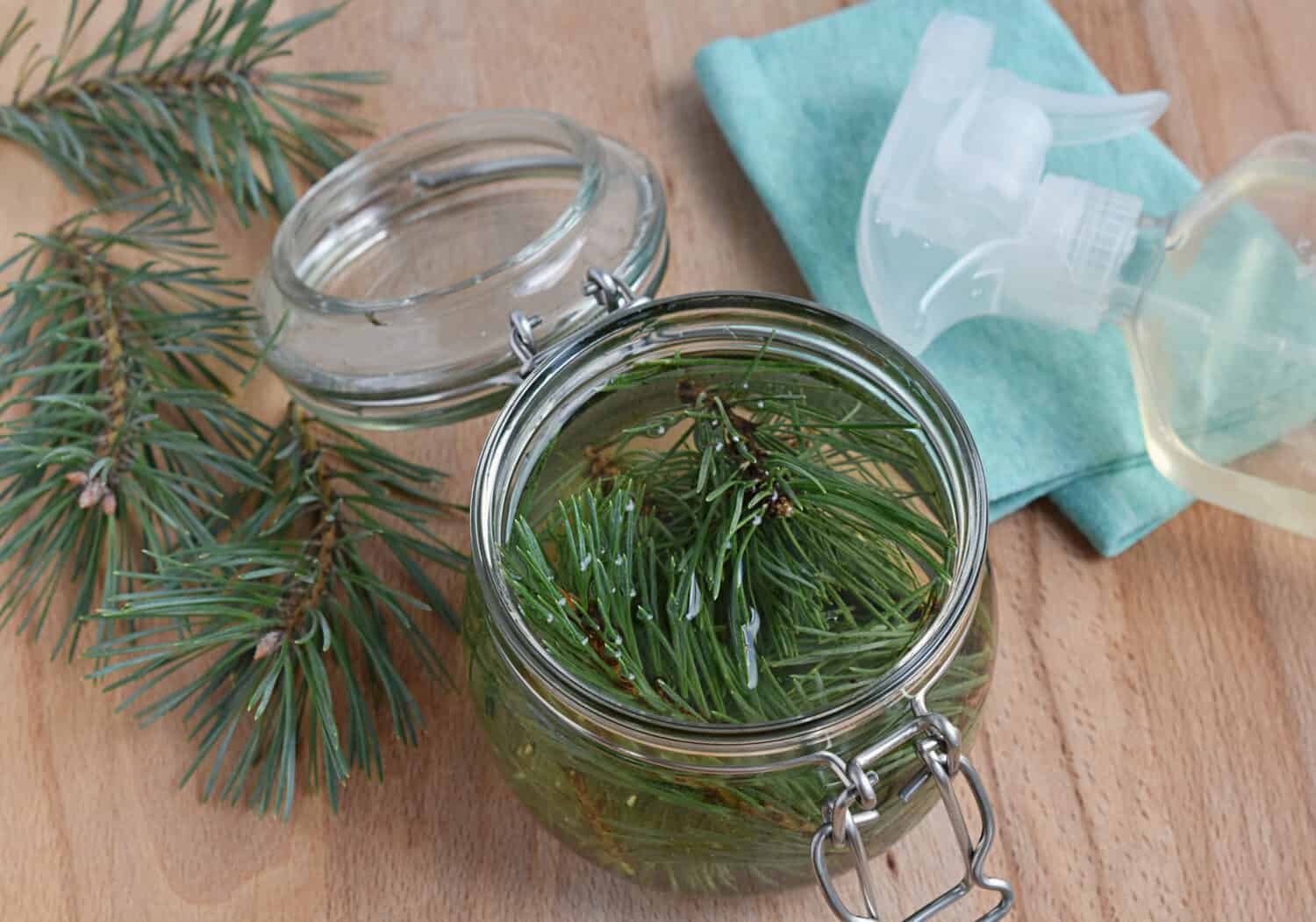
Pine-based cleaners are another option for repelling bears from campsites, but make sure your cleaner is free of citrus.
©Indre Pau/Shutterstock.com
While some recommend using Pine-Sol, make sure you aren’t using anything lemon-scented. Citrus smells are a source of curiosity for bears. Any other pine-based cleaner is okay for application to bear canisters, bags, lockers, or trash. In fact, you can even make your own pine-based cleaner by combining vinegar and pine needles. With a rag, rub around a bear container, to apply the pine-based smell. If you spill meat juice or something similar on your clothing, you can apply the pine-based cleaner to use a smell bears dislike while also not ruining your clothes.
The Use of Bear Spray
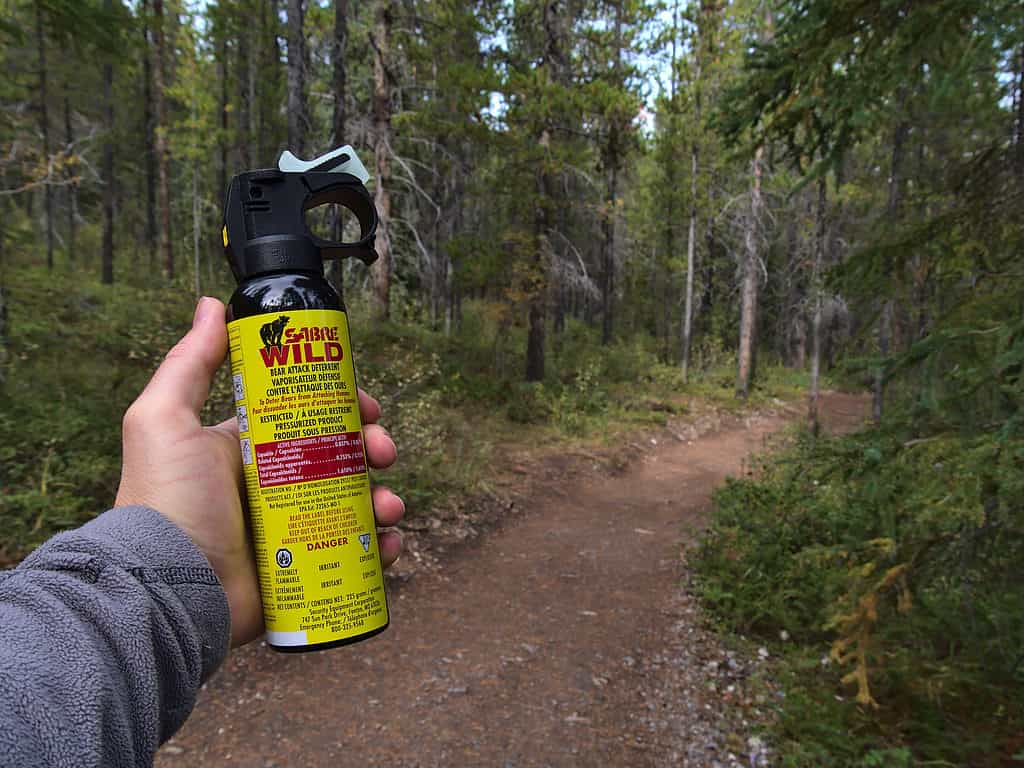
©iStock.com/Timon Schneider
Unlike the scents listed above, bear spray is only to be used for unwanted contact with a bear, not for prevention. Often, a bear encounter happens because of odorous items left out; however, you can just happen to come across a bear. This is why it is so important to be aware and knowledgeable of bear spray. Bear spray is a defense when all other methods of avoiding bear contact have been exhausted.
Bear Spray Is Not Classified as a Smell Bears Hate
The smell of bear spray when left to dry attracts bears, so never spray it unless you are in direct contact with a bear. If staying in bear country, you must know how to use bear spray properly. Bear spray is a red pepper oil or capsaicin-based spray. Bear spray is different than pepper spray in that it is much stronger. Remember that the concentration of capsaicin is greater.
Experts recommend treating this defense like a firearm. In fact, bear spray holsters are a common item for hikers and backpackers alike. Sometimes, seconds are the difference between a fatal bear attack or simply an encounter. This is why a fast draw of bear spray is crucial. Further, when tested against gun effectiveness, bear spray actually wins.

The smell of bear spray actually attracts bears once dried. As such, it’s not for the prevention of bears, but rather, defense against them. Avoid spraying it outside your bear box.
©Photo Spirit/Shutterstock.com
Bear Spray Administration
Upon seeing a bear, stand your ground. Do not under any means run or turn your back. This often activates the bear’s prey response.
You may see the bear start to huff and puff. While this may look like anger, the bear is actually trying to get your scent.
Often, after spotting and identifying you, the bear might change its course, deeming you too big of a risk. If it keeps coming closer, though, you should reach for your spray.
Once the bear is within 70 feet of you, have your spray ready and be ready to use it.
If a bear begins to charge and is within 30 feet of you, that is when you should spray slightly in front of its path. Make sure you spray in front of its path. The idea is that the bear runs into the potent pepper shower.
After you spray the bear spray, you should walk backward away from the bear, until you are out of sight of it.
Always consult local park rangers or the forest service at any place you stay. They can give you accurate information about bear safety, and they will have specific knowledge of the area. Often, state and national parks will even have a safety hour, teaching campers how to use bear spray and educating them on other bear encounter prevention tactics.
If these resources are not available, consult usda.gov before making any bear safety decisions.
A Note on Sound to Deter Bears

Making loud noises in an area where bears could frequent can scare them away before you encounter them.
©Andrei Kravtsov/ via Getty Images
If you scare bears off before encountering them, there’s a good chance you won’t even have to use your bear spray. Bears are generally risk-averse. Often, if you are with another person, the sound of the two of you talking is enough to ward a bear off.
Making noise while walking through densely packed forests is a good idea. Clapping and periodically cupping your hands to yell out phrases are great ways to help keep bears away from you.
North American Bears
If you’re traveling in North America, there are three distinct bear species you may encounter.
1. North American Black Bear (Ursus americanus)
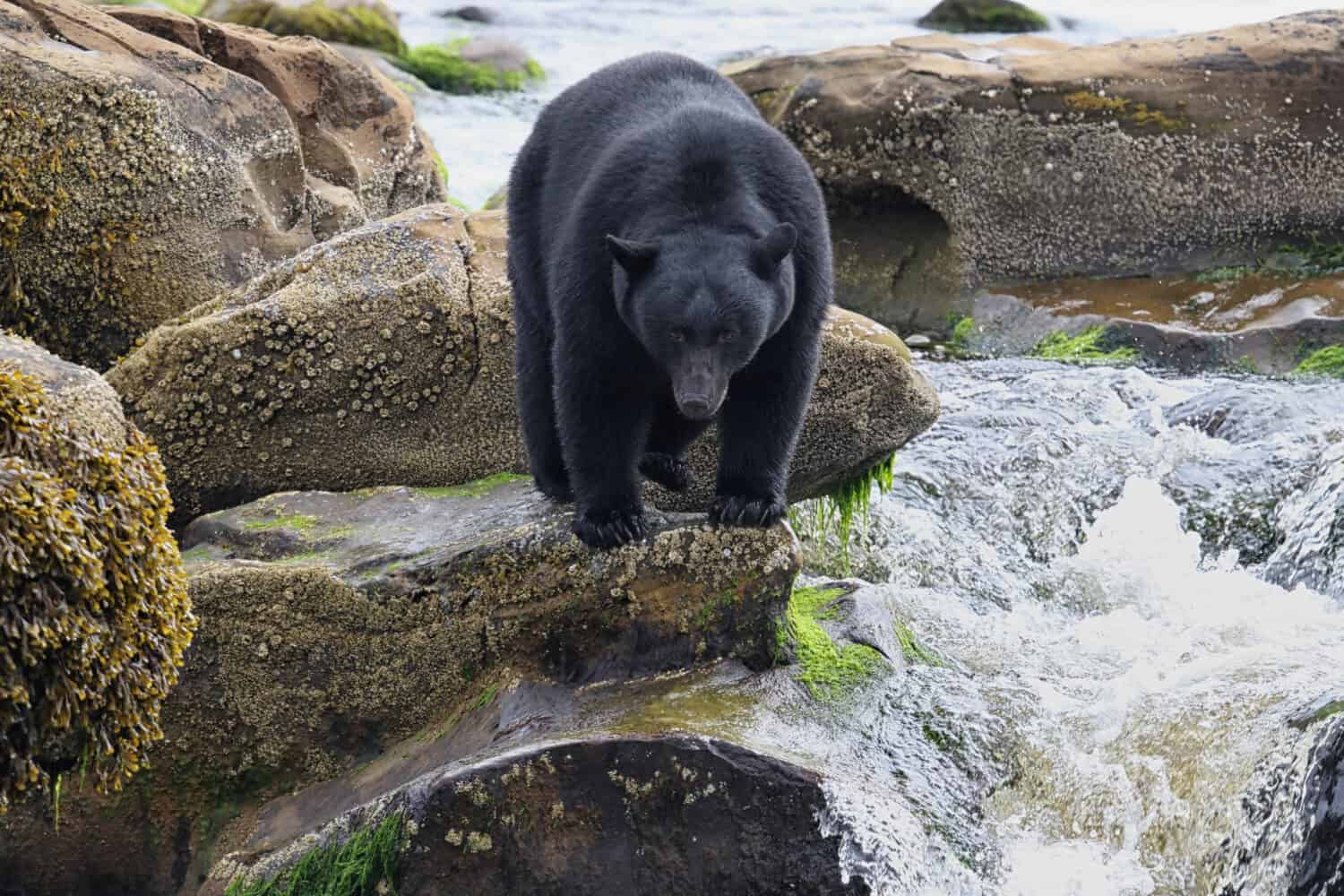
These are the most common types of bears found in the United States. Black bears don’t truly live up to their name, as they can also be white and brown. What truly distinguishes black bears from grizzly bears is their size and shape. Black bears are typically much smaller than grizzly bears. In fact, black bears are the smallest of the North American bears.
Beyond size, if you look at a black bear on all fours, you will notice their rumps are higher than their head, unlike grizzly bears.
The black bear also has a broader territory than the grizzly bear, living in several North American ranges. Those include the Pacific Northwest, the Appalachian Mountains, Canada, and Alaska. Black bears are even found in Mexico.
2. Grizzly or Brown Bears (Ursus arctos horribilis)

Grizzly bears are particularly large, but they’re not the largest bear species.
©Lorraine Logan/Shutterstock.com
Grizzly bears are less common than the North American black bear. They are also an array of colors, including cinnamon, blond, reddish-brown, grayish, and almost black. In addition, grizzly bears have a hump on their back that black bears lack.
Even though the Californian flag has a grizzly bear on it, they are sadly extinct in the state. Before grizzly bears were almost hunted and poisoned to extinction, they had a similar territory as black bears. Now, grizzly bears exist in a much smaller zone. Some states that still have grizzly populations are Washington, Wyoming, Colorado, Alaska, Montana, Idaho, and Colorado. Adult grizzly bears can weigh 700 pounds or more, and they are typically much larger than black bears.
3. Polar Bear (Ursus maritimus)

Polar bears have a unique method of ice fishing. By sticking their heads through holes in the ice, they catch seals and bring them to the surface to eat.
©Gecko1968/Shutterstock.com
Contrary to popular belief, polar bears are not white, but transparent. Their color changes based on their environment. For instance, a polar bear’s coat can appear gray on a cloudy day, while some polar bears in captivity can have a green tint from the algae surrounding them.
Polar bears need sea ice to live, which affects their habitat selection. Currently, polar bears reside in Alaska, Greenland, Canada, and Russia. The biggest of the North American bears, polar bears can weigh upwards of 1700 pounds.
Summary of 3 Smells That Bears Absolutely Hate
| Scent | Preparation | Application |
|---|---|---|
| Bleach | Dilute bleach using a 1:10 ratio of bleach to water, rub it onto a rag, or pour the mixture into a spray bottle. | Rub the bleach and water mixture on the outside of your bear-safe lockers, canisters, or trash cans. |
| Ammonia | Never mix this chemical with bleach. Instead, pour small amounts into containers that have holes in the lid. | Leave containers with ammonia around the campsite. You can also use this like you would bleach and rub small amounts on bear-safe items |
| Pine-based cleaners | Acquire or make your own pine-based cleaner with pine needles and vinegar. | Apply to bear-safe containers, or to clothes that have become soiled with bear-friendly scents. |
Thank you for reading! Have some feedback for us? Contact the AZ Animals editorial team.








